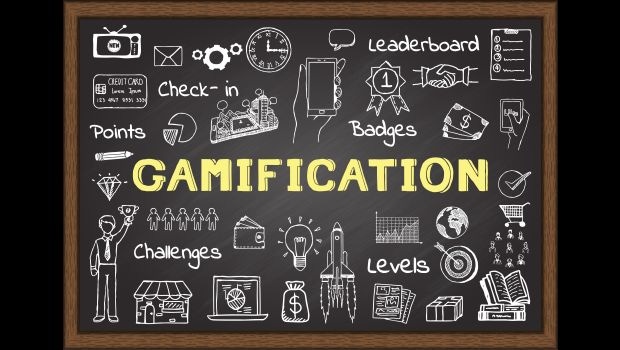Companies with channel programs use gamification to test partner loyalty, show them how they are progressing, and to reward them for personal achievements.
May 27, 2016

**Editor’s Note: This is the second installment in a two-part series on gamification. Read part one here.**
By Josh Delauder
Vendors are using gamification to inspire their channel partners to focus not solely on sales but on team-oriented goals.
Gamification, which first entered the lexicon around 2003, started to gain in popularity as the Web became more prevalent in our lives. This technique involves using the same sort of awards system and strategies found in board games and video games to boost morale and productivity at work.
Companies with channel programs use gamification to test partner loyalty, show them how they are progressing, and to reward them for personal achievements.
Craig DeWolf, research vice president, Channel Sales, Blackhawk Engagement Solutions, says there are two types of gamification being used to motivate channel partners.{ad}
“There [are] content games in which the whole purpose is to play the game for some marketing benefit. And then there’s structural gamification, which is using game-like components such as leaderboards, dials and gauges to supplement existing content,” he explained.
Think of dials and gauges as similar to spinners in lottery systems. If partners reach a certain quota, they spin the spinner and win some sort of prize. Structural gamification is much like Mouse Trap, where there are a lot of pieces you have to put together to win the game. Once you’ve put them all together, you spin the spinner to move your piece and then have the boot kick the marble. Instead of moving a piece, you’re winning a prize.
Gamification is showing promise and has proven results. Cisco, for instance, implemented gamification into its Cisco Rewards partner program.
Elaine Goodman, senior manager, Cisco’s Global Partner Organization, told Channel Partners that gamification has allowed the company’s resellers to “take the necessary steps to maximize the benefits of the program.”
Goodman said partners earn rewards and badges for logging into the company’s partner portal and doing business.
“Examples include entering their first claim of a sale or completing video tutorials and progressing through the program,” Goodman said.
Brian Burke, research vice president with Gartner, says gamification is becoming more common in product training.
“Gamification can be used by the supplier to create more engaging product training course material, giving people in the company’s channel the knowledge to sell a supplier’s product with greater confidence,” he said.
Another company, Standard of Trust, a software-as-a-service (SaaS) provider, is using gamification during its startup period. Rob Peters, Standard of Trust’s CEO and founder, told Channel Partners that gamification is helping with commitments among his “affiliates,” his term for business partners.
One gamification technique he uses is …
{vpipagebreak}
relationship capital, or RCP.
“When we request a commitment from a company, and [the reseller] delivers on whatever commitment was negotiated, they earn relationship capital,” he said. “Trophies are awarded based on how many relationship capital points you have earned,” he said, “and it’s tracked through a calendar.”
Standard of Trust also provides gifts that partners can choose from based on their number of points.
“We do provide bonuses. They can choose from gifts from various websites,” he said.
Using gamification helps to keep partners – and the company’s employees – focused on commitments.
“It really keeps people engaged,” Peters said. “They’ll get excited; they want to earn more points. They want to prove to the world that they are who they say they are; that they can be trusted and that they’re credible.”
With Standard of Trust still in startup mode, Peters finds gamification to be building loyalty with partners in advance of the full launch of the company’s SaaS platform.
“It will all (soon) be public. It will be a platform that we will be selling to the market,” he said.
While gamification is an excellent tool to improve productivity, Cisco has found it to boost morale as well.
“Partner surveys have shown that our partners want to be engaged via new tactics, such as gamification practices, because they simplify processes and give the processes more personal meaning through rewards or other benefits,” said Goodman.
She offers an example of how it has benefited employees and the company.
“In one instance where gamification was used, Cisco saw a sustained increase in activity and ongoing engagement of 55 percent for the duration of the campaign,” Goodman said.” In another instance … a services training program that had been in place for over three years saw participation double in the first quarter, in part due to the gamification element.”
DeWolf has seen similar results.
“We have one client in the enterprise-software space who uses gamification as a way to boost behavior,” he said. “What is happening [in the industry overall] is that engagement between manufacturers and their channel partners is actually decreasing … in many cases when you interject gamification it’s very common for us to see improvements in specific programs increase up to tenfold.”
Read more about:
AgentsAbout the Author(s)
You May Also Like


